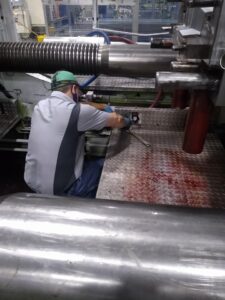It is impossible to mold parts without a working injection machine. This is something that molders can state with absolute clarity. Yet, there are still many companies that follow a “run-parts-until-the-machine-breaks-down” approach. The question we must ask ourselves is why?
Unplanned maintenance is costly. In these instances, the discussion and development of repair plans occurs with the press sitting idle. Replacement parts need to be located, assuming they are in-house at all. If no replacement parts are available, searching for and ordering components from part vendors becomes necessary. Then, if production demands it, delivery of those parts may need to be expedited, at a hefty cost.
Looming in the distance is the potential that your interruption could cause a shutdown at the customer. Will we have to perform an unscheduled mold change if we have another press available? Doing so could be incredibly costly in terms of time and money.
Preventive maintenance schedules do not have to be cumbersome. The maintenance department is certainly busy, but there are some fundamental steps of inspection. Once implemented, preventive inspections reduce downtime and the costs associated with unplanned events. This article will outline five key systems that require regular review for wear and disrepair.
1. Hydraulic Oil
Hydraulic-oil levels and oil integrity are key to proper machine function. Low oil can lead to poor machine performance and pump breakdowns. Oil levels should be checked weekly to ensure oil level is correct and consistent. Beyond that, send oil samples to the lab every four months to verify oil cleanliness and performance.
The screw should be pulled once a year to inspect the shank, flights and barrel I.D. against the screw manufacturer’s recommended dimensional requirements.
2. Screw & Barrel
Screw and barrel performance is critical to standardized processes. Verify that fill time, cushion, screw recovery and peak pressures remain consistent. Fluctuations in key process-control variables can be a sign of a wearing barrel, screw or check ring. The screw should be pulled once a year to inspect the shank, flights and barrel inner diameter against the screw manufacturer’s recommended dimensional requirements.
Read more: Injection Molding: Focus on these Seven Areas to Set a Preventive Maintenance Schedule

